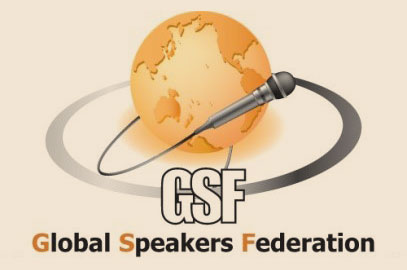Sir Ken Robinson Moves Us to New Level of Creativity
In this 19-minute speech, Sir Ken Robinson makes an entertaining and moving case for creating an education system that nurtures (rather than undermines) creativity. Having had the pleasure of seeing him present in 2006 at a conference, I am now very excited to feature one of his talks in this newsletter. Discussion of this speech will focus on three things: His movements, what makes his content so compelling, and ways in which he links himself with the audience.
HIS MOVEMENTS — OR LACK THEREOF
Sir Ken does not move around when he speaks. In this video, you’ll see that the camera is focused on his upper body and face only, and he stays planted on his feet throughout his presentation. This is a stellar example of how it’s possible to engage an audience without moving around, gesturing, or “working the stage.” This is quite unique to Sir Ken, as most speakers feel more comfortable moving around…and there’s nothing wrong with that either.
COMPELLING CONTENT
Sir Ken uses so many core components of a persuasive speech that it’s no wonder his audiences are mesmerized. Let’s take a look at a five of them:
1. Clearly stated hypothesis, problem statement, and introduction. Within the first three minutes, he states his hypothesis (“My contention is all kids have tremendous talents and we squander them. Pretty ruthlessly. So I want to talk about education, and about how creativity is as important as literacy”). He gets to his point quickly and concisely.
2. Definition of terms. We all know what the word “creativity” means. But in reality, the definition of “creativity” can vary, depending upon the context in which it’s used. Sir Ken actually defines the term, ensuring that he and the audience understand it in exactly the same way.
3. Stories. There are at least five stories scattered throughout this speech, and each one is relevant to the points that he makes. Some are funny, some are poignant…and all are relevant.
4. Rule of Three. Sir Ken uses the “Rule of Three,” reflecting the studies that show that people learn better in three’s. At 3:00, he reveals the three things he’s going to talk about at the conference. At 13:00, he states “We know three things about intelligence.” This is a powerful technique used by both speakers and writers.
5. Vivid language. Sir Ken uses vivid, metaphoric language that creates imagery and impact (Example: “We have mined our minds in the way we strip-mine the earth.”)
CONNECTING WITH THE AUDIENCE
1. Humour: Several parts of this speech are just downright funny. And despite the fact that his subject is a serious one, his ability to inject humour is one of his greatest strengths.
2. Shared learnings: Sir Ken links how his speech fits in with the speeches from other conference speakers, thereby establishing a sense of community among all attendees. It also proves that he isn’t using a memorized or “canned” speech.
Watching Sir Ken Robinson is a lesson in how great speech content can move an audience – even if the speaker doesn’t move at all.




[…] of how moved and inspired they were (which means that if you haven’t seen it yet, go now!) I wrote an article about this speech several years ago, ‘deconstructing’ exactly WHY it was so p…(take a look to see […]